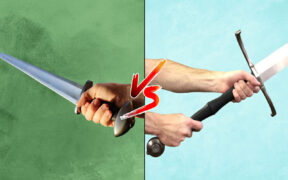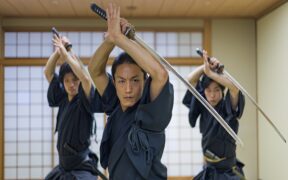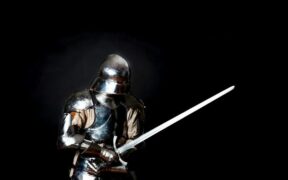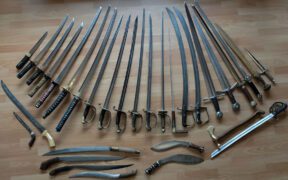Our content features commercial links to our products, committed to transparent, unbiased, and informed editorial recommendations. Learn More
Two-Handed Sword Stances: Beginner’s Guide
NO AI USED This Article has been written and edited by our team with no help of the AI
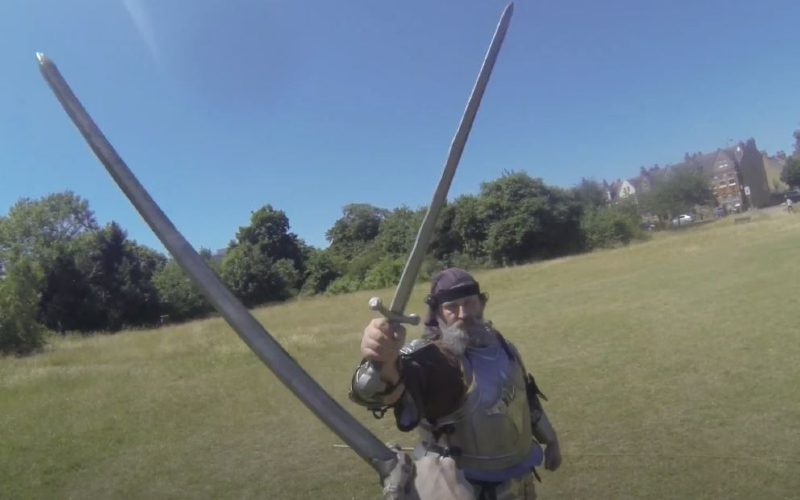
If you are a sword enthusiast and decide that the time is right to be buying a sword of your own but lack the knowledge of wielding one, this guide is for you.
This guide will teach you the most common and basic two-handed sword stances used all over the world. You will see both a picture of how to do them and written instructions. Find out the correct postures and tips on how to learn these stances and guards best.
Basic Two-Handed Sword Stances
There are many different sword stances around the world. This is because each sword school and each part of the world has different sword types and techniques.
Here are the most well-known and easy to learn two-handed sword stances throughout the world:
Fool’s Stance
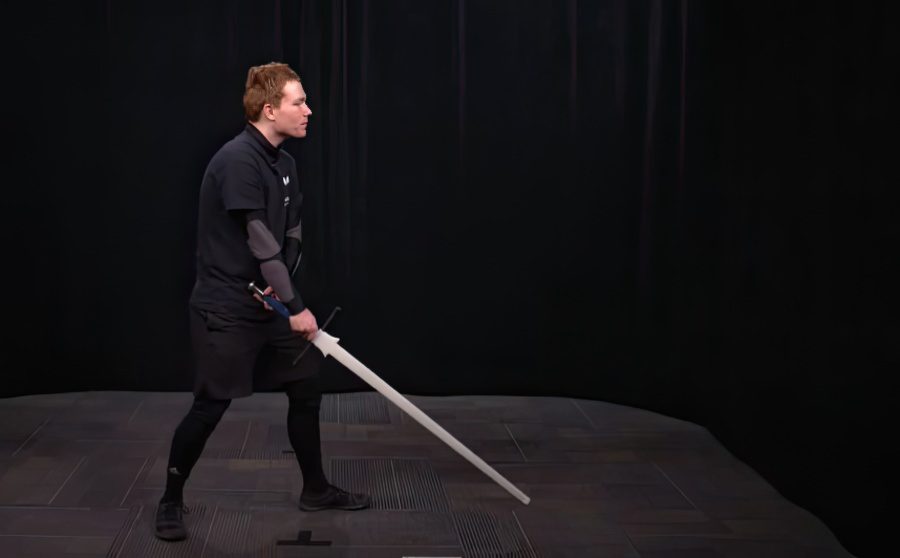
Since you are not directly threatening the enemy from this position, it seems “foolish.” However, if the enemy attacks you, you can trick them by quickly putting your sword in the long point guard and stabbing the attacker. It is also a resting guard stance which offers a high counterattack if needed.
It is debatable whether the attacker is the fool for attacking into this guard or the wielder of the sword is the fool for staying in this stance.
Vom Tag Stance
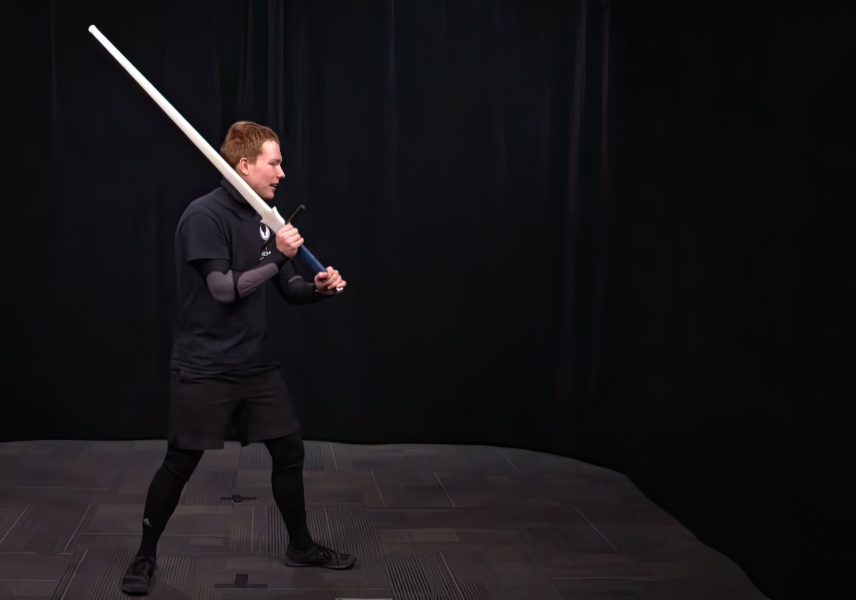
The Vom tag guard is when you’re keeping your sword on top of your shoulder. You can mount your sword on the shoulder, but it isn’t advised in combat.
This stance will allow you to strike from up, down, left, or right towards your target, making it very effective. That is why you see it as a common stance in modern historical medieval movies.
High Vom Tag Stance
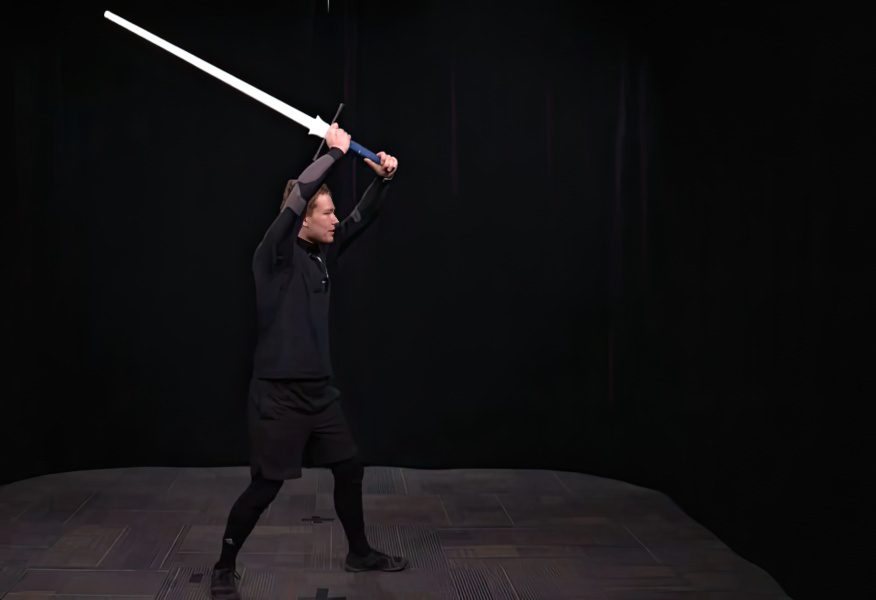
The high sword stance is also a basic stance where you are holding the grip of the sword on top of your head. Some sword veterans will argue that this is a perfect stance to protect yourself, while others disagree and say it only makes you tired.
However, this stance should be used when in direct battle. You will gain leverage and be able to do a very strong strike with a lunge that can impact and break armor in half.
Ochs Stance
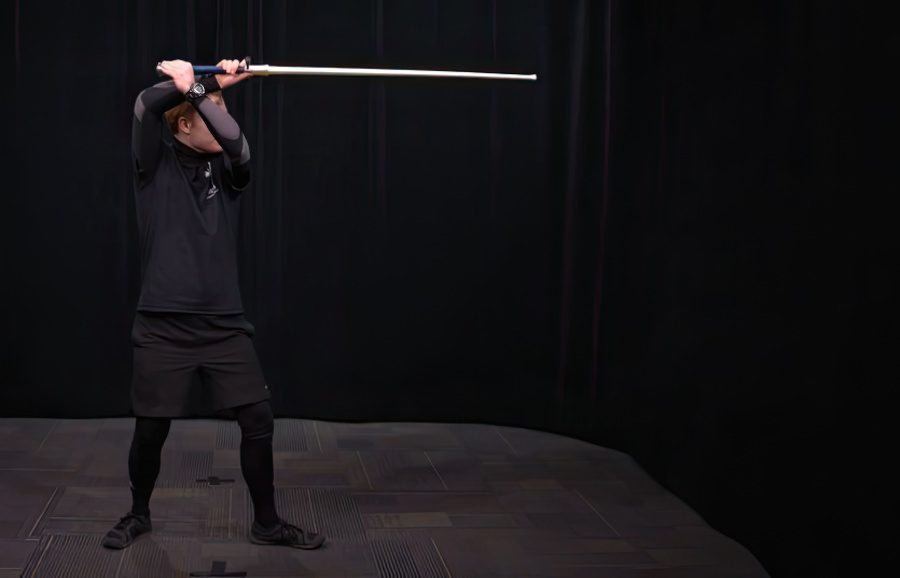
In this stance, you are holding your two-handed sword on top of your head while next to it. In this stance, it is very important to have your arms across each other.
This amazing stance will offer you high attacks with the tip of your sword. This is one of the best defenses when facing a high attack, such as the Vom Tag.
Plow Stance
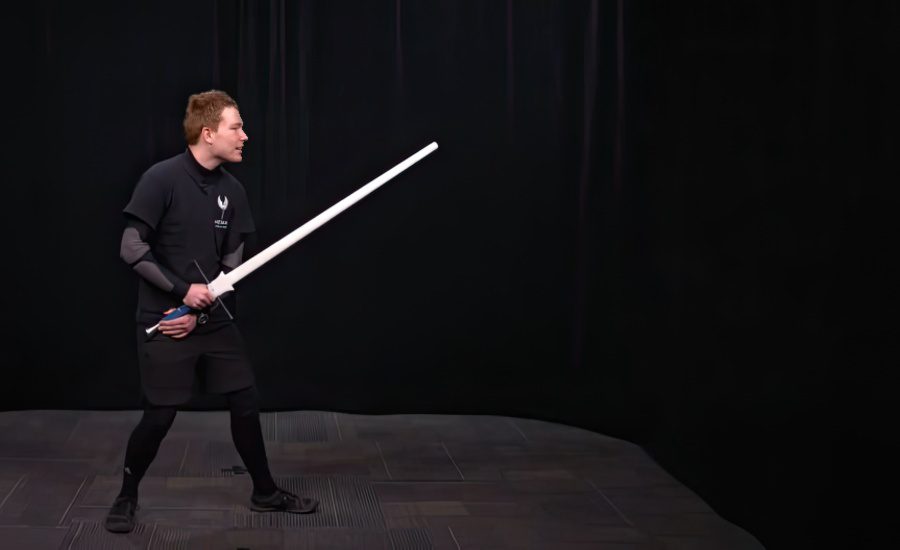
The plow stance, or Pflug, is a sword’s guard which is made for a quick and very powerful thrust attack. This can be done while attacking or, more likely, when defending.
This stance requires knowledge of sword footwork. You must know how to properly place your feet on the ground so you can provide the strength for this strike.
Longpoint Stance
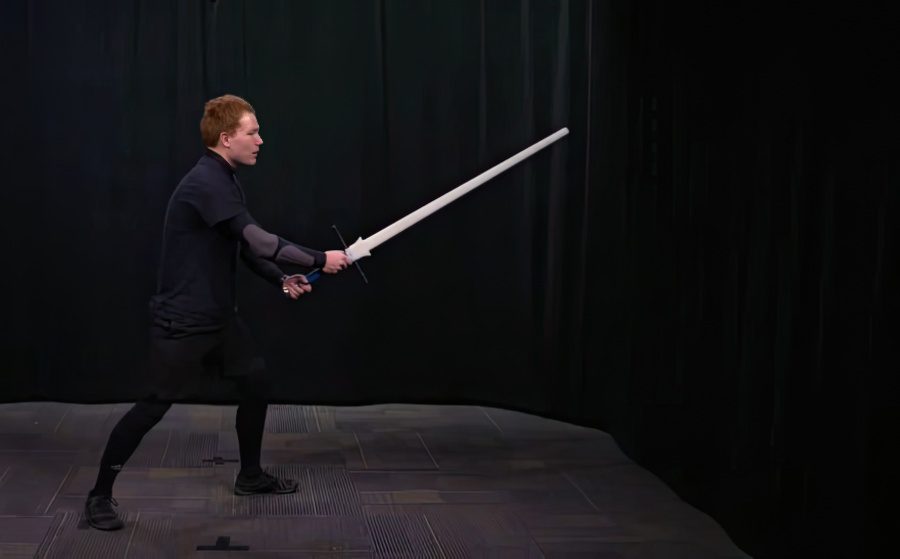
The long point stance is the best sword stance used for fighting. Hold your handle with both hands and with a very strong grasp. It is the most basic sword stance that can be seen in every anime and movie. This stance will allow you to deflect incoming attacks and keep your enemy at a distance.
Make sure not to stay in this stance for a very long time. A sword is a heavy tool; if you’re in this stance for a long time, your arms will tire.
Side Stance
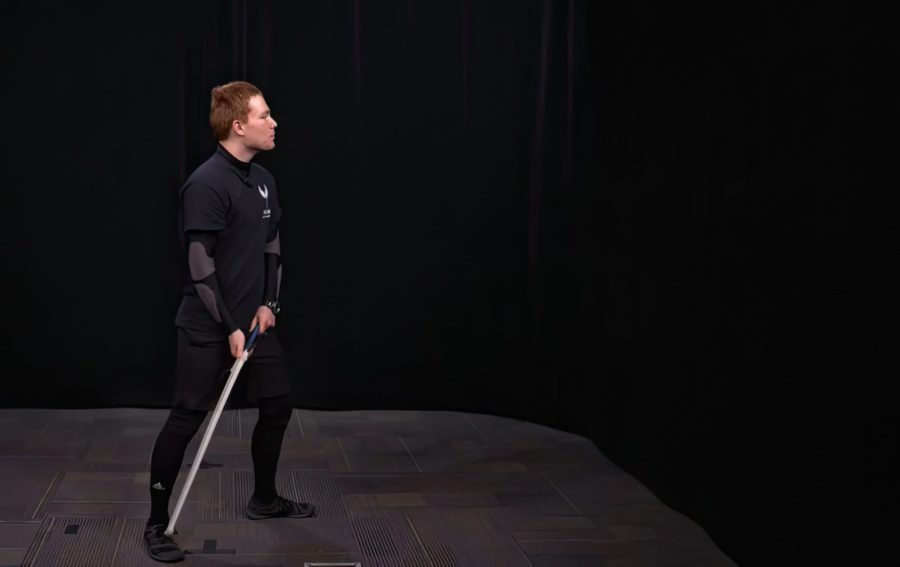
When doing the side stance, ensure that it is as shown in the picture above. Some people will place the sword way back or far in the front, but it should be lined up with the right leg back.
This stance will allow you to make a very powerful strike coming from down to up. Hold the handle of the sword firmly with both hands when initiating it.
Tail Stance
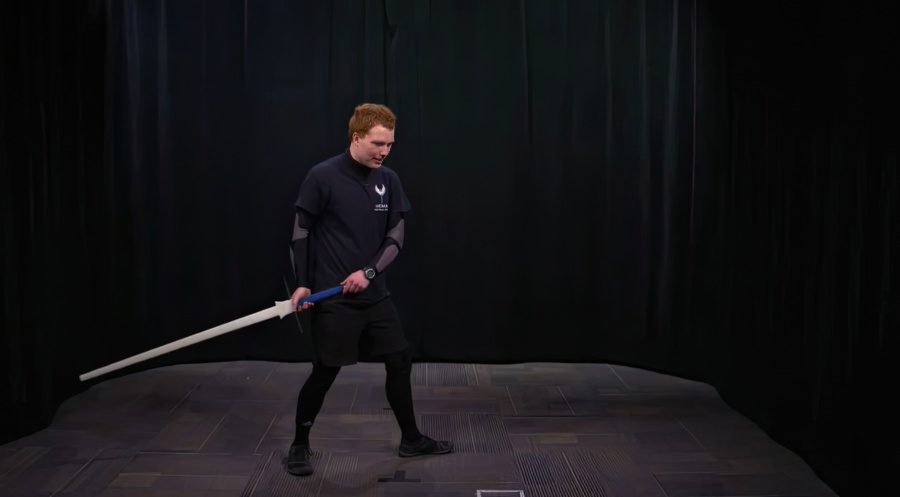
The tail guard is one of the basic sword stances where you position your sword at your back, looking like a tail. In this position, it is very important to grip your handle tightly with your right hand while holding the pommel very loosely with your left hand.
This way, you will be able to invest the maximum power while at the same time swinging it around in any direction if needed.
Wrath Stance
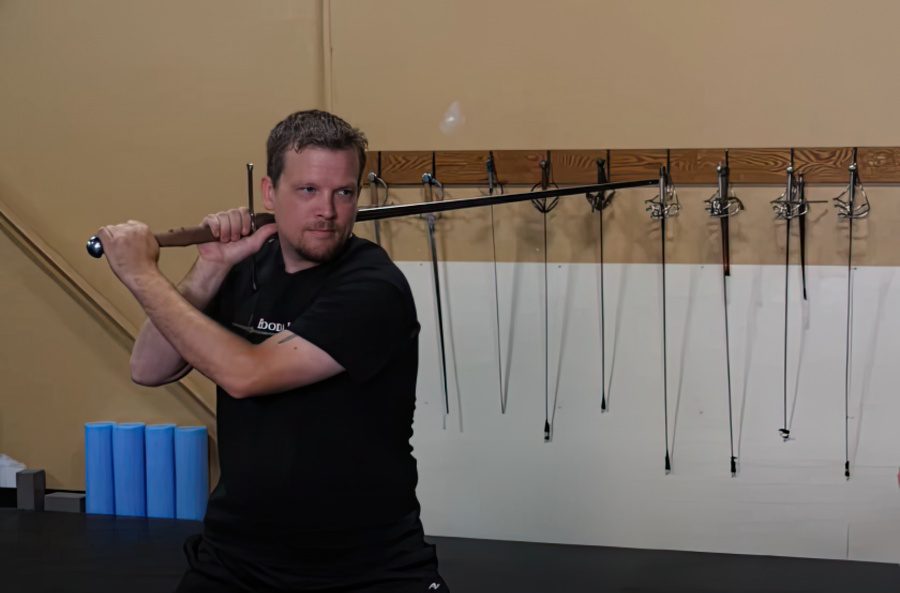
The wrath stance is a very useful slashing sword stance. Hold the handle under the crossguard with your right hand as tightly as possible, while the left at the pommel should be loose enough to help you swing the sword.
Usually, this stance is employed when using the saber or swords with curvature. It is deadly but offers little protection from incoming stabbing attacks.
The Perfect Posture for any Sword Stance
Stand with your feet shoulder-width apart, and then turn so that one foot is facing “forward” and the other is turned 45 to 90 degrees away. Your back should be straight, your weight should be evenly distributed between your feet, and your body should be slightly lowered. This way, when you move forward or backward, your head should stay still and not move up and down.
How To Choose the Correct Sword Stance
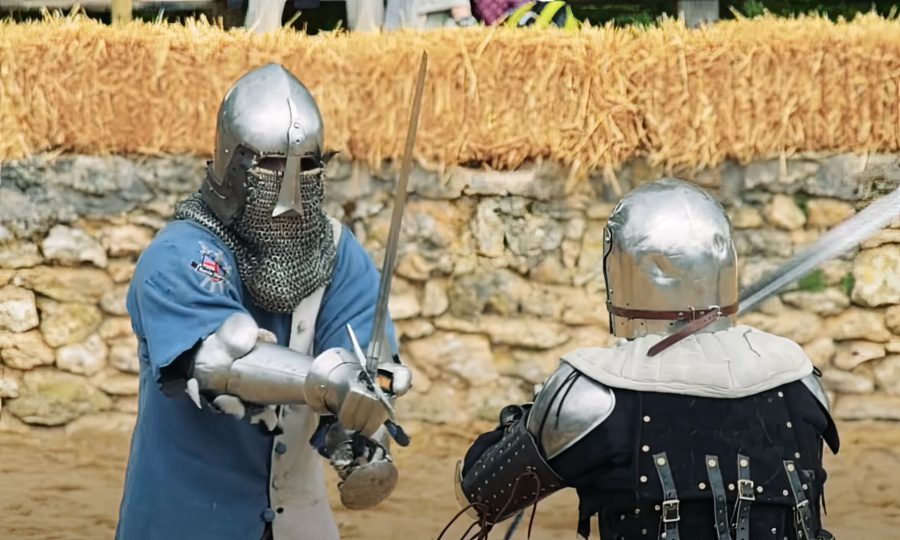
It’s important to train with your sword and stances and read the current situation. If you are required to defend, choose a defensive stance. If you need to attack, position yourself accordingly.
All sword fighting stances mentioned above are stable, balanced, and best for defense and attack. You may notice many similarities and differences when you look at the fighting positions of schools of swordsmanship, like Japanese Kenjutsu and German longsword fencing.
If you are fighting with a two-handed sword, like a longsword or katana, you will need to stand in a more centered, squared-off stance. On the other hand, fighting with a one-handed sword may encourage a more side-on stance. This is because you want to make your body look less like a target while making your sword arm reach as far as possible.
How to Learn Sword Stances as a Beginner
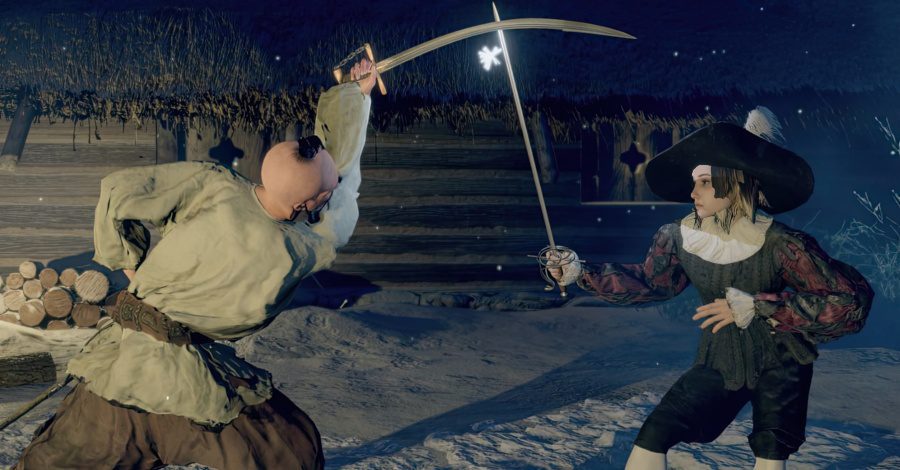
If you want to learn how to fight with a sword, there is no better way than to do it for real.
Sword Schools
Modern sport fencing will teach you how to hold the smallsword, the épée, or the saber for a duel. Historical European Martial Arts can teach you how to fight like people from the Middle Ages, the Renaissance, and the 19th century.
You can learn Japanese sword Katana arts like Kendo, Iaido, and Kenjutsu. Some schools of Kung Fu still teach Chinese swordsmanship. Philipino Martial Arts, like Eskrima/Kali, will teach you how to fight with Philipino swords.
LARP events or Hema Swords
Participating in some big LARP events or games will improve everything you know about wielding a sword in a proper stance. You can observe how veterans play around with them, and with time, you’ll master a sword stance yourself.
You can buy swords known as Hema. These swords are made exclusively for sparring and training scenarios. You can also order some wooden or prop swords to help you.
Time
If you are a sword enthusiast, you may want to wield a Katana or an arming sword properly in the first couple of months. Unfortunately, it doesn’t work that way. You will need to give it a lot of time and practice, making mistakes over and over again until you perfect it.
Conclusion
To become a beginner swordsman, you will need to learn basic sword stances that are mentioned above. All of them are meant to help you defend yourself and also attack. Make sure to continue practicing these sword stances until they feel natural to you before moving on to harder ones.
